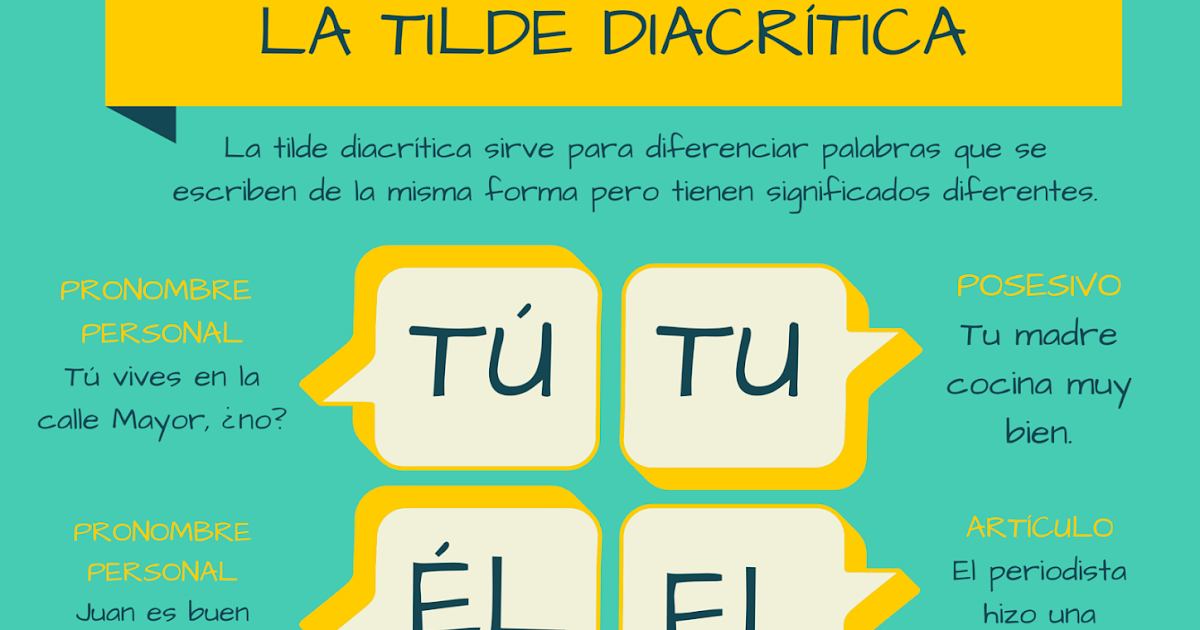The Spanish language is rich and diverse, filled with unique elements that contribute to its beauty and complexity. One such element is the use of accents, especially the tilde, which can change the meaning of words significantly. In this article, we will delve into the concept of "el con tilde," exploring its importance in the Spanish language as well as its implications in communication and understanding. From its grammatical functions to its cultural relevance, "el con tilde" is a topic that deserves attention.
Understanding "el con tilde" is essential for anyone learning Spanish or seeking to appreciate the language's intricacies. The tilde, represented as a small wave-like symbol (~), primarily appears over the letter 'n' in the Spanish alphabet, transforming the letter into 'ñ.' This small alteration is not merely decorative; it changes the pronunciation and meaning of words entirely. For instance, "ano" (year) and "año" (anus) are two distinctly different terms, illustrating the critical role that "el con tilde" plays in effective communication.
Moreover, the presence of the tilde reflects the broader cultural and linguistic heritage of Spanish-speaking countries. It is a reminder that language is not static but is constantly evolving and adapting. As we explore "el con tilde," we will uncover its various applications, challenges faced by learners, and how it shapes identity within the Spanish-speaking community.
What is El Con Tilde?
"El con tilde," literally translated as "the one with a tilde," refers to the use of the tilde in the Spanish language. This diacritical mark is primarily used over the letter 'n' to form the letter 'ñ.' The tilde signifies a distinct phonetic sound, differentiating it from a standard 'n.' For example, the word "niño" (child) has a different pronunciation and meaning than "nino," which is not a recognized Spanish word. This distinction highlights the importance of the tilde in conveying accurate meaning in the language.
How Does the Tilde Affect Pronunciation?
The tilde not only alters the letter 'n' but also affects the overall pronunciation of words. When pronounced, the 'ñ' produces a palatal nasal sound, akin to the 'ny' in "canyon." This sound is integral to many Spanish words and is part of what makes the language melodious and unique. For learners, mastering the pronunciation of 'ñ' is crucial for clear communication.
What Are the Key Differences Between 'N' and 'Ñ'?
- Phonetic Sound: 'N' is pronounced as a standard nasal consonant, while 'Ñ' has a softer, palatal sound.
- Meaning: Words can change entirely based on the presence of the tilde, as seen in "ano" vs. "año."
- Usage: 'Ñ' is a distinct letter in the Spanish alphabet, while 'N' is not.
Why Is El Con Tilde Important in Spanish Grammar?
The role of "el con tilde" in Spanish grammar cannot be overstated. It serves as a grammatical marker that helps convey meaning and context. In written Spanish, the tilde also plays a role in accentuation, indicating which syllable of a word should be emphasized when spoken. This is particularly important for words that are otherwise spelled the same but have different meanings, such as "tú" (you) and "tu" (your).
How Do Spanish Speakers Value Tilde Usage?
For native Spanish speakers, the correct usage of the tilde is a mark of literacy and education. Misusing or neglecting the tilde can lead to misunderstandings and might be perceived as a lack of attention to detail. Therefore, understanding and applying "el con tilde" correctly is essential for effective communication in both written and spoken Spanish.
What Challenges Do Learners Face with El Con Tilde?
Language learners often face challenges when it comes to mastering "el con tilde." Some common difficulties include:
- Pronunciation: The sound of 'ñ' can be challenging for non-native speakers, leading to mispronunciations.
- Spelling Confusion: Learners may forget to include the tilde, altering the meaning of words.
- Accentuation Rules: Understanding the rules governing accentuation can be complex and varies across dialects.
What Are Some Examples of El Con Tilde in Use?
To illustrate the significance of "el con tilde," here are some examples of common words that incorporate the tilde:
- Niño: Child
- Año: Year
- Mañana: Morning or tomorrow
- Señor: Mr. or sir
- Baño: Bathroom
Biography of a Notable Figure: El Con Tilde in Literature
One of the most prominent figures who embraced the use of "el con tilde" in his literary works is Gabriel García Márquez. His mastery of the Spanish language and its nuances, including the tilde, has left a lasting impact on literature worldwide.
| Detail | Information |
|---|---|
| Name | Gabriel García Márquez |
| Birthdate | March 6, 1927 |
| Nationality | Colombian |
| Notable Works | One Hundred Years of Solitude, Love in the Time of Cholera |
| Awards | Nobel Prize in Literature (1982) |
Conclusion: Embracing El Con Tilde in Spanish Language Learning
In conclusion, "el con tilde" is a vital component of the Spanish language that enhances pronunciation, meaning, and cultural identity. For learners and speakers alike, understanding the tilde's significance opens the door to deeper comprehension and appreciation of the language. As we continue to explore the beauty of Spanish, let us embrace the nuances of "el con tilde" and celebrate the richness it brings to communication.
Discover The Best Philly Cheesesteak In Mundelein
Kayaking Body Transformation: An Inspiring Journey
Unveiling The Magic: The Sign Of The Times Cover


